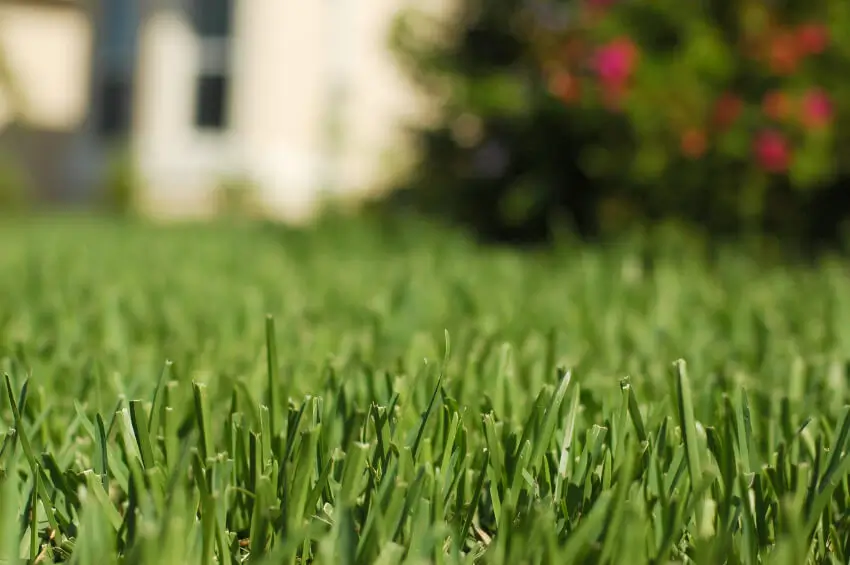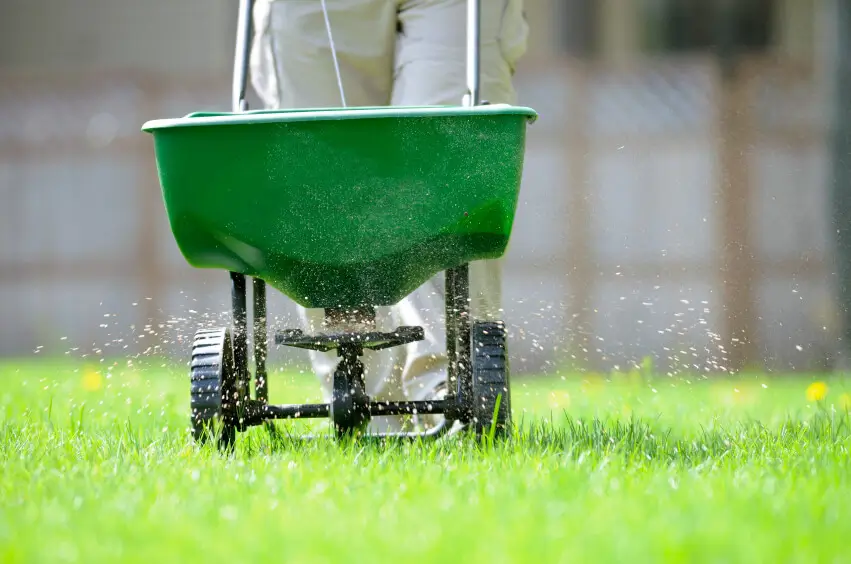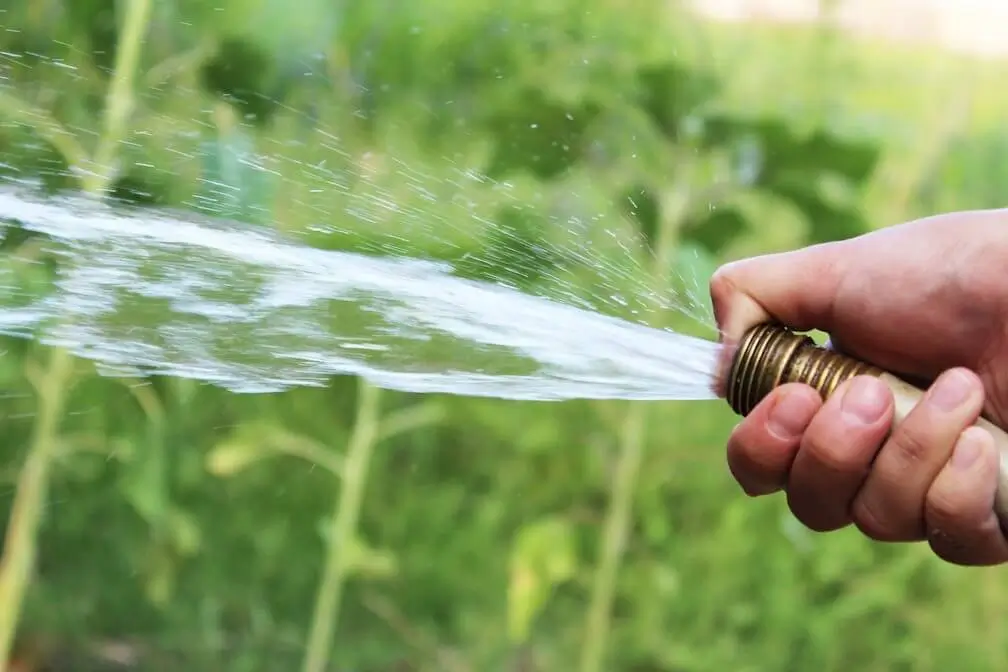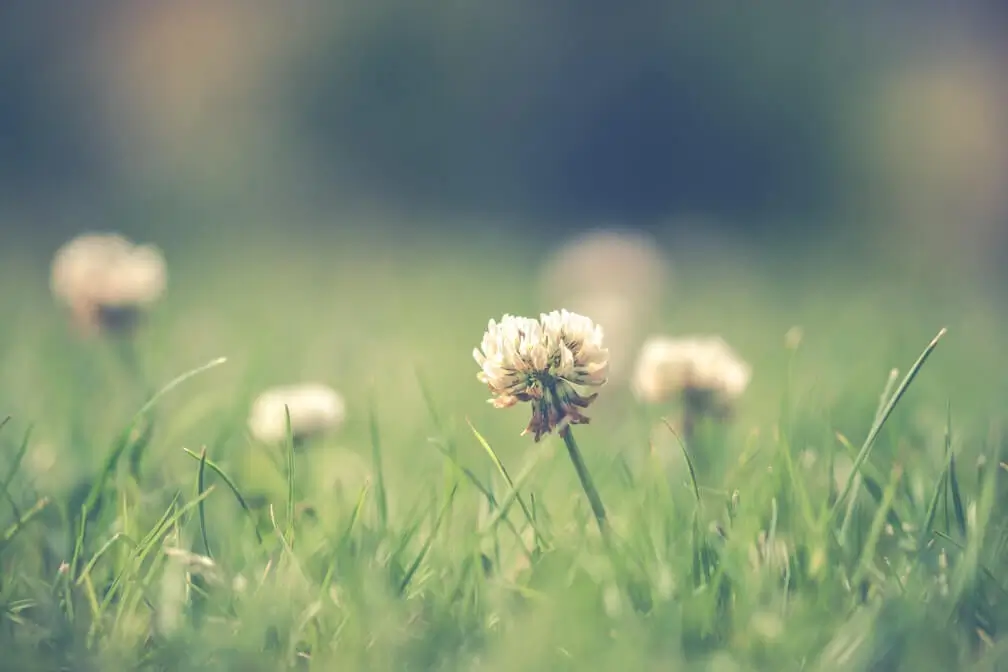
Annual Bluegrass is a very common lawn weed in the south-central region and typically germinates in the fall and winter months. It's an annual, cool-season grass that spreads with seeds.
How to identify Annual Bluegrass
You can identify it by looking for bright green spots in your lawn, which are easier to spot if you have Bermuda grass that goes dormant and loses its color in the winter. If left unchecked this weed can become a real problem for your lawn.
Common Chickweed is a winter annual weed that makes its appearance primarily in the fall and is dormant in the winter. This weed is native to Europe and spreads by seed. It typically flowers around the one-month mark and seeds within 3 months.
How to Identify Common Chickweed
You can identify common chickweed by looking for a stringy plant that grows near the ground. It has small leaves that lead to a point at the end and small white flowers when they bloom. The stems are a lighter green and have small hairs in vertical rows.
This weed is native to North America and is a perennial plant that grows aggressively in nutritionally poor soil. It grows almost year-round and is a real problem for gardens and lawns. The weeds tend to grow upright in small patches in your grass.
How to Identify Common Yellow Woodsorrel
Yellow Woodsorrel can be identified by its heart-shaped leaves that grow in groups of three. These leaves are paired with bright yellow flowers that bloom in the late spring and early fall. The leaves are up to half an inch in diameter and fold in at night time when there is no sun.
Corn Speedwell is a winter annual that grows very well in thin grass. It germinates in mid-fall and is covered with fine hairs that resemble fur. This weed tends to germinate in the fall in Arkansas which is when you'll notice it the most.
How to Identify Corn Speedwell
Corn Speedwell has flat, heart-shaped fruit and the upper leaves of this weed are narrow and lower to the ground. The flowers are very small and almost look like purple berries scattered throughout the leaves. The flowers can also be white and blue, and there are small hairs on the leaves and stems.
The dandelion is a perennial broadleaf weed which means it regrows every spring. This weed grows best in soil that is rich in nitrogen and potassium and prefers low amounts of phosporus. Dandelions are native to Eurasia but are found in almost every type of habitat.
How to Identify Dandelion
Dandelion is one of the most easily identifiable weeds as it is bright yellow in color and grows on a single stem. Their stems are hollow and the seeds create what looks like a white cotton ball. You may have blown on these as a kid and watched them carry off into the wind!
Purple Nutsedge is a perennial weed that emerges in the spring from underground tubers. It grows in a wide variety of environments but prefers wet areas with plenty of sun. This weed may look like a type of grass, but is actually a member of the sedge family.
How to Identify Purple Nutsedge
Purple Nutsedge has shiny grass-like leaves with rounded tips. It can grow up to 30 inches tall with blades reaching about half an inch wide. The green is lighter in color and is easily seen when growing in darker grass types.
Spotted Spurge is native to the eastern part of the United States and is an annual plant. It grows close to the ground and has no problem with being mowed over. This weed produces a white sap that can actually irritate the skin if you come in contact with it.
How to Identify Spotted Spurge
Spotted Spurge grows low to the ground and looks purplish at a distance. The leaves have a dark red spot in the middle which creates this purple shade. As it's very low to the ground, it looks like a dense mat of leaves when there is a large amount of it.
Have you identified one or more of these weeds in your yard? Here at Turf Team, we're experts on all of the weeds that could be impacting your lawn in Arkansas. If you want to learn more about how to get rid of weeds, give us a call and we'll set you up with a customized lawn cares solution.


